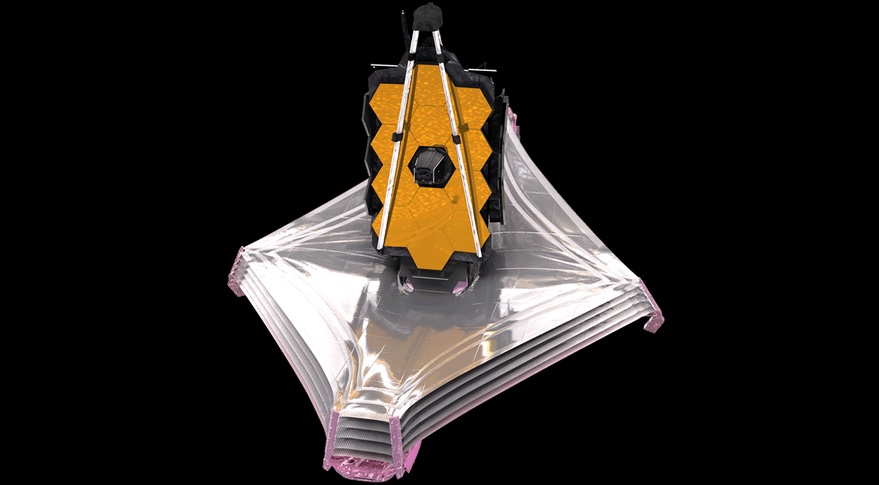WASHINGTON — Controllers completed the deployment of the sunshield of NASA’s James Webb Space Telescope Jan. 4, allowing the mission to move ahead to setting up the telescope itself.
Spacecraft controllers finished the tensioning of the final two layers of the five-layer sunshield just before noon Eastern Jan. 4 after tensioning the first three layers the day before. The tensioning stretches the aluminum-coated Kapton material into its final shape and ensures the layers are separated so they can cool the telescope and its instruments.
“We’ve still got a lot of work to do, but getting the sunshield out and deployed is really, really big,” Bill Ochs, JWST project manager at NASA’s Goddard Space Flight Center, told project officials in the mission operations center after telemetry confirmed the final layer was in place. “It constantly reinforces what I tell everybody that the JWST team is the best in NASA.”
Deploying the sunshield, a structure roughly the size as a tennis court that had to unfold in a precise manner, was one of the biggest challenges for setting up the telescope. It involved many mechanisms that were single-point failures and was the subject of extensive simulations and contingency planning before launch.
“We had very detailed predictions” of the behavior of the sunshield deployment systems, said James Cooper, JWST sunshield manager at NASA Goddard, in a hastily arranged media call after tensioning was completed. “We were extremely happy with how well things matched up to that. The tensioning phase especially went better than we could have hoped.”
“The mood was hard to describe,” said Hillary Stack, sunshield deployment specialist at Northrop Grumman, the prime contractor for JWST, on the call. “There was a lot of joy, a lot of relief.”
With the sunshield now deployed, controllers will turn their attention to the telescope mirrors. While the original timeline called for a one-day break between the completion of sunshield tensioning and deployment of the telescope’s secondary mirror, NASA announced late Jan. 4 it will deploy the secondary mirror, mounted on the end of a tripod, on the morning of Jan. 5.
That will be followed by the deployment of a radiator on the back of the telescope and two “wings” of the primary mirror, each holding 3 of the 18 hexagonal mirror segments. Once the mirror wings are locked in place, the telescope will be fully deployed, although months of work lie ahead to align the telescope optics and commission its instruments.
The telescope deployment, though, is not considered as complex as the sunshield. “The sunshield deployment certainly was the most complex in terms of moving parts all having to work in harmony,” said Cooper. “The stuff that’s left from a deployment point of view is more conventional hinges and motors and things like that.”
